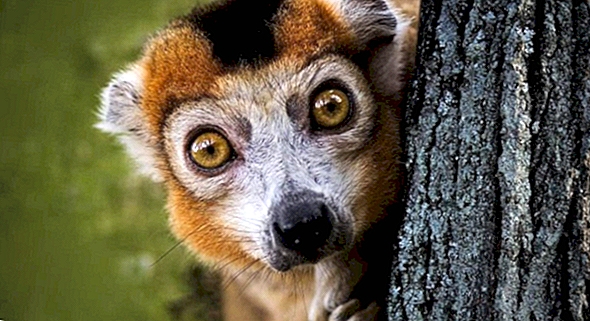We explain what a vertebrate animal is and how these animals are classified. Also, characteristics and examples of vertebrates.

What are vertebrate animals?
Vertebrate animals are a highly diverse group of animal Kingdom, made up of almost 62,000 current species and as many extinct ones, whose individuals have in common the presence of a backbone or vertebral column that divides their body into two bilaterally symmetrical portions.
Vertebrates also have a skull that protects the brain, integrated into a bony or cartilaginous skeleton. Their bodies are typically divided into three regions: head, trunk, and tail. The trunk is further divided into the thorax and abdomen.
Evolutionarily, vertebrates come from a freshwater environment, but over the ages they have been able to adapt to most environments in the world. planet, even the most challenging, thus having a presence in the sea, the land and the air. The oldest representative of this group is the Haikouichthys fish, which emerged about 530 million years ago, during the lower Cambrian period, and is now extinct.
The traditional biological classification of vertebrate animals distinguishes between 10 different classes, grouped as follows:
- Superclass agnatha (no jaws). Lampreys (class Cephalaspidomorphi-Petromyzontiformes) and hagfish (class Myxini) are found here, as well as numerous species of extinct jawless fish.
- Superclass gnathostomata (with jaws). Here are some extinct primitive fish (class Placodermi), the sharks, rays and cartilaginous fish (class Chondrichthyes), the also extinct acanthodians or spiny sharks (class Acanthodii) and fish with skeletons (class Osteichthyes).
- Superclass tetrapoda (with four limbs). In this group are the amphibians (class Amphibia) that alternate the Water and earth; the reptiles (class Reptilia) with scaled skin and cold blood; birds (class Aves) feathered, flying or not; and the mammals (class Mammalia), which feed their young with milk.
examples of vertebrate animals

Some simple examples of vertebrate animals are:
- land mammals. Such as dogs, cats, elephants, lions, giraffes, cougars, hyenas, wolves, camels, sheep, horses, rhinos, etc.
- Primates and apes. Like orangutans, chimpanzees, gorillas, spider monkeys and the human being same.
- bony fish. Like sea bream, cod, sardines, swordfish, catfish, frogfish, tuna, etc.
- Cartilaginous fish. Like the shark or the manta ray.
- aquatic mammals. Like the dolphin, the whale, the seal or the sea lions.
- Birds of all kinds. Like vultures, hawks, toucans, owls, crows, hummingbirds, parrots, macaws (parrots), woodpeckers, kingfishers, pelicans, etc.
- amphibians. Like toads and frogs, salamanders or newts.
- reptiles. Like snakes, boas, crocodiles, alligators, turtles, the lizards, the iguanas.
Invertebrate animals
Invertebrate animals are those species that do not have a dorsal chord, or a backbone, or an articulated internal skeleton. About 95% of known living species are invertebrates, between 1.7 and 1.8 million species.
